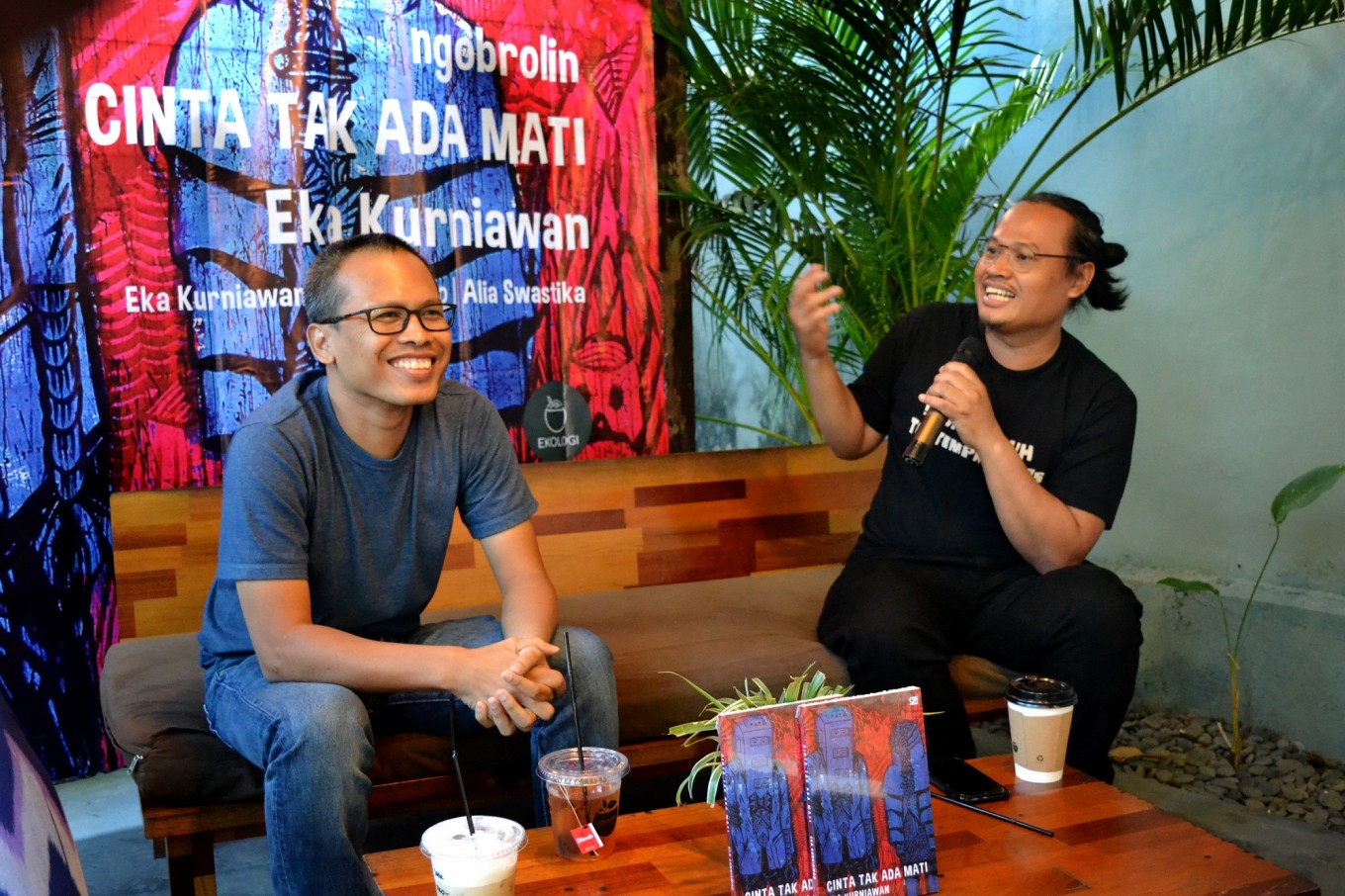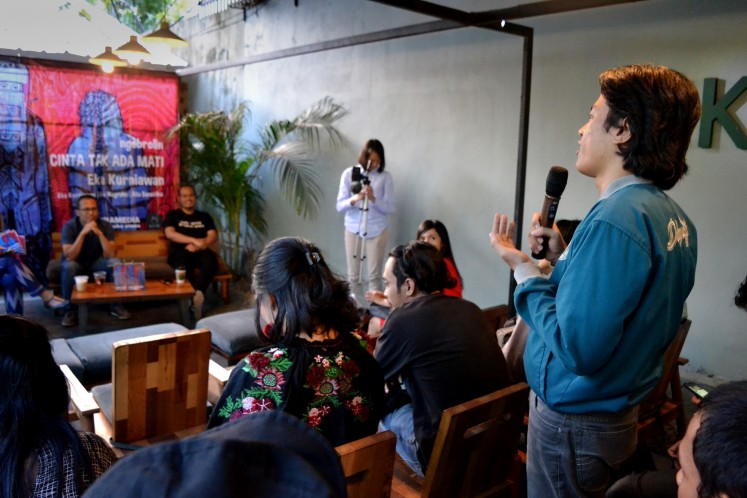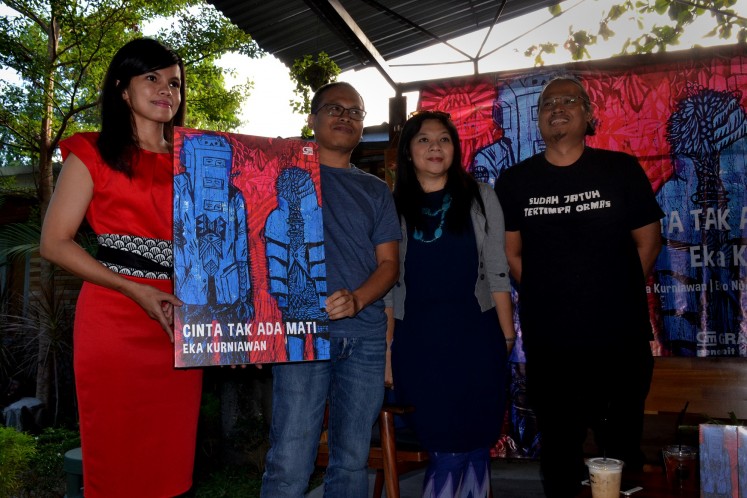Popular Reads
Top Results
Can't find what you're looking for?
View all search resultsPopular Reads
Top Results
Can't find what you're looking for?
View all search resultsEka Kurniawan, Eko Nugroho shed light on 'Love Knows No End'
A discussion on Eka Kurniawan's book, Cinta Tak Ada Mati, featured the author and artist Eko Nugroho speaking about the creative process and future collaboration.
Change text size
Gift Premium Articles
to Anyone
O
n Saturday, art and literature enthusiasts flocked to Ekologi Coffee in Yogyakarta to attend a discussion on Cinta Tak Ada Mati (Love Knows No End). A collection of short stories by acclaimed writer Eka Kurniawan, the book was republished in April with a new cover that was illustrated by artist Eko Nugroho. Both Eka and Eko were present at the discussion, with art curator Alia Swastika acting as moderator.
Eka was the first Indonesian writer to be nominated for a Man Booker International Prize in 2016 for Lelaki Harimau (Man Tiger). His works have been translated into more than 24 languages, and his novel Cantik Itu Luka (Beauty is a Wound) was included in the 100 notable books list by The New York Times in 2015.
Cinta Tak Ada Mati was first published by Gramedia Pustaka Utama in 2005. The new edition includes three new stories, “Persekot” (Money in Advance), “Jimat Sero” (Talisman) and “Tak Ada yang Gila di Kota Ini” (No One is Crazy in This Town), which replaced “Jumat ini Tak Ada Khotbah” (No Sermon on This Friday), “Pendekar Mabuk” (Drunken Warrior) and “Para Musuh” (The Enemies). The 13 stories in the book are rooted in Indonesian identity, mixed with myths, urban legends and history.
Several attendees asked about Eka and Eko’s creative process. Eka said what triggered his imagination ultimately was his curiosity.
An attendee asks a question about Eko's creative process when he illustrated the book. (JP/Stefanus Ajie)“Ever since I was a small boy, I’ve always had an overbearing curiosity about everything around me. I wanted to know what type of life there was behind the hill across the village I lived in. I was dying to figure out what went through the intercity bus passengers’ minds when I visited the bus terminal; where were they heading, what they would be doing. Those feelings sparked stories and images in my head, and until now I use that curiosity as an inspiration to write,” said Eka.
Read also: Eka Kurniawan: Writing fearlessly
He used Cinta Tak Ada Mati as an example. “I was interested in the lives of workers in old movie theaters, which now no longer operate. I wondered what their thoughts and feelings could be. Other times, I was inspired by other people’s work, such as Pengakoean Seorang Pemadat Indis (Confessions of an Indies Junky). A story by Thomas de Quincey in 1821, Confessions of an English Opium-Eater, made me want to write my own,” he said.
Cinta Tak Ada Mati is mostly filled with stories of absurdity, imaginations that run wild with hints of gloom. Real life events, places and figures are expertly intertwined with fictitious ones in a way that blurs boundaries. Eka has a gift for using simple words to “annoy” his readers, making them invested in the unique story lines and sparking their curiosity.
That thin line between reality and fantasy, as well as between realism and absurdity, seems to be in parallel with Eko’s mind. Both of them tell stories of everyday lives that are factual as well as imaginative, depicted in such a way that is bleak but also colorful.
For Eko, illustrating Eka’s book was a challenge. “I’ve always read his work, and it’s true, I was emotionally annoyed by the stories in Cinta Tak Ada Mati. Certain emotions welled up as I read the story of Mardio and Melatie, and that’s what I poured into my painting: feeling shattered and filthy,” Eko said at the discussion.
An attendee asked whether Eka will continue to collaborate with Eko in the future, to which Eko said, “It’s very possible. Yogyakarta is a town of artists from so many different disciplines. It’s the perfect place to meet and collaborate.” (wng)













